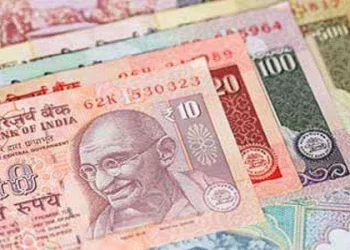The Reserve Bank of India (RBI), the preeminent central bank of India, stands as the cornerstone of the nation’s financial and economic edifice, wielding significant influence over the country’s monetary policies, banking regulations, and overall economic stability. Its multifaceted functions encompass the issuance of currency, regulation and supervision of the banking sector, management of foreign exchange reserves, and the formulation and implementation of monetary policies aimed at fostering economic growth while maintaining price stability. In the intricate web of India’s financial ecosystem, the RBI plays a crucial role in ensuring the smooth functioning of financial markets, safeguarding the interests of depositors, and promoting the overall health and resilience of the economy.
The Initial Location of the RBI Central Office
When the RBI was first established on April 1, 1935, its central office was initially set up in Kolkata (formerly known as Calcutta). Kolkata at that time was a major economic and commercial hub in India. It had a long – standing reputation as a center for trade, with numerous British – era trading companies and financial institutions operating from there. The city’s infrastructure and established business networks made it a logical choice for the fledgling central bank to be headquartered.
The Move to Mumbai
In 1937, just two years after its inception, the RBI’s central office was permanently relocated to Mumbai (formerly known as Bombay). There were several reasons behind this significant move. Mumbai was rapidly emerging as the pre – eminent financial center of India. It had a bustling port, which was a major gateway for international trade. The city was also home to a large number of banks, both Indian and foreign, as well as a vibrant stock exchange.
The Reserve Bank of India’s new location in Mumbai was at the Fort area in South Mumbai. The address of the central office is Reserve Bank of India, Central Office, Fort, Mumbai 400001. The Fort area has historical significance in Mumbai. It was the site of the original British settlement in the city. Over time, it evolved into a commercial and financial district, housing many important institutions.
Significance of Mumbai as the Location for RBI’s Central Office
Financial Ecosystem
Mumbai’s status as the financial capital of India makes it an ideal location for the RBI’s central office. The central bank is in close proximity to major commercial banks, financial markets, and other financial institutions. This geographical proximity enables the RBI to have better oversight and regulation of the financial sector. For example, it can easily interact with banks regarding policy implementation, such as changes in interest rates or reserve requirements. In case of a financial crisis or instability in the market, the RBI can quickly respond as it is physically close to the epicenter of financial activities.
Connectivity
Mumbai has excellent connectivity, both within the country and internationally. It has a major international airport and well – connected railway and road networks. This connectivity is essential for the RBI’s international operations. The central bank is involved in managing India’s foreign exchange reserves, participating in international financial forums, and interacting with other central banks around the world. Easy access to international travel and communication channels from Mumbai facilitates these activities.
Structure and Departments within the RBI Central Office
The RBI central office in Mumbai houses several important departments that are responsible for different aspects of the central bank’s functions.
Monetary Policy Department
This department is at the forefront of formulating and implementing India’s monetary policy. It analyzes economic data, such as inflation rates, GDP growth, and employment figures, to determine the appropriate stance of monetary policy. Based on its analysis, it decides on key policy rates like the repo rate (the rate at which the RBI lends to commercial banks) and the reverse repo rate (the rate at which the RBI borrows from commercial banks). These decisions have a direct impact on the interest rates in the economy, which in turn affect borrowing, lending, and investment activities.
Banking Regulation and Supervision Department
This department is tasked with overseeing and regulating the banking sector in India. It ensures that banks operate in a safe and sound manner, adhere to prudential norms, and protect the interests of depositors. The department conducts regular inspections of banks, monitors their capital adequacy ratios, asset quality, and liquidity positions. It also issues licenses to new banks and regulates mergers and acquisitions in the banking sector.
Foreign Exchange Department
Given India’s growing integration with the global economy, the Foreign Exchange Department of the RBI central office in Mumbai plays a vital role. It manages India’s foreign exchange reserves, which are crucial for maintaining the stability of the Indian rupee in the international market. The department formulates policies related to foreign exchange transactions, controls capital flows in and out of the country, and intervenes in the foreign exchange market when necessary to manage the exchange rate of the rupee.
Other RBI Offices and Their Relationship with the Central Office
The RBI has a network of offices across the country in addition to its central office in Mumbai. It has 22 regional offices, mostly located in state capitals. These regional offices act as the eyes and ears of the central office at the regional level. They collect data on local economic conditions, monitor the performance of regional banks and financial institutions, and assist in the implementation of RBI policies at the grassroots level.
There are also four regional boards located in Mumbai, Kolkata, Chennai, and New Delhi. Each regional board consists of five members appointed by the central government for a four – year term. These boards provide valuable input to the central board of the RBI on regional issues. They represent the economic interests of regional cooperative banks and local banks and perform other functions delegated by the central board.
Conclusion
Mumbai, often referred to as the “financial nerve center” of the nation, boasts a highly robust and vibrant financial ecosystem. It is home to a multitude of domestic and international banks, financial institutions, stock exchanges, and a diverse range of financial service providers. The city’s well – developed infrastructure, including state – of – the – art financial technology facilities, further enhances its attractiveness as a financial hub. Additionally, Mumbai’s excellent connectivity, both within the country and globally, through its extensive road, rail, air, and sea networks, enables seamless communication and transactions. These factors combined make Mumbai the ideal location for the RBI’s central office, allowing the bank to interact effectively with the broader financial community and stay at the forefront of financial developments.
Related topics




























